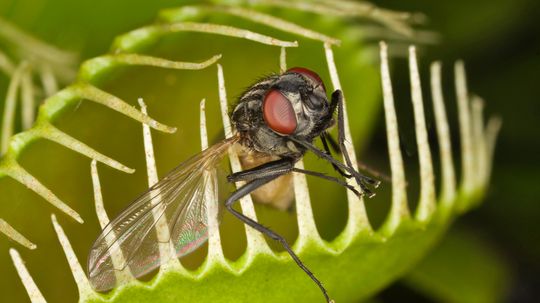Table of Contents
In a world filled with fascinating and peculiar plant species, few can rival the enigmatic nature of the Venus flytrap. This captivating carnivorous plant has long captured the imagination of scientists and nature enthusiasts alike. Its ability to trap and consume insects is nothing short of extraordinary, but how exactly does it accomplish this remarkable feat?
A Deceptive Invitation
Contrary to popular belief, the Venus flytrap does not rely on its vibrant colors or enticing aroma to attract unsuspecting prey. Instead, it employs an intricate mechanism that involves specialized leaves equipped with sensitive trigger hairs. When an insect lands on these delicate hairs, it triggers a rapid chain reaction that sets off the plant’s predatory response.
Within milliseconds, the leaf lobes snap shut like a steel trap, ensnaring any unfortunate creature within its grasp. This swift movement is made possible by tiny cells located at specific points along each lobe’s inner surface. These cells rapidly change shape in response to mechanical stimulation caused by contact with prey.
An Elaborate Digestive Process
Once trapped inside its leafy prison, the Venus flytrap begins its macabre feast. The initial closure of the lobes serves two purposes: preventing escape and creating a sealed chamber for digestion to occur undisturbed by external factors such as rain or wind.
The digestive process itself is both fascinating and gruesome. The plant secretes enzymes into this enclosed space which break down proteins from their captive meal into more easily absorbable nutrients. Over time, these nutrients are absorbed by specialized glands lining the inner surfaces of each lobe.
A Resourceful Adaptation
The evolution behind such an elaborate trapping mechanism raises intriguing questions about survival strategies in harsh environments. The Venus flytrap is native to nutrient-poor habitats, where it has adapted to supplement its diet with insects. This carnivorous behavior allows the plant to extract vital nutrients that are otherwise scarce in its surroundings.
Furthermore, this remarkable adaptation demonstrates nature’s ability to find unique solutions for survival. While other plants rely on photosynthesis alone, the Venus flytrap has evolved a predatory strategy that sets it apart from its botanical counterparts.
A Testament to Nature’s Complexity
The intricate mechanisms of the Venus flytrap serve as a testament to the complexity and diversity found within our natural world. From its deceptive invitation to its gruesome digestive process, this captivating plant continues to intrigue scientists and enthusiasts alike.
As we delve deeper into understanding these extraordinary organisms, we gain valuable insights into the wonders of evolution and adaptation. The Venus flytrap stands as a reminder that even in seemingly inhospitable environments, life finds ingenious ways to thrive.




